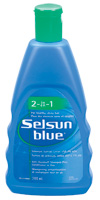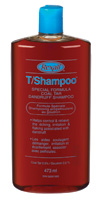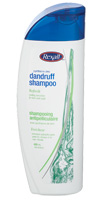Health + Wellness Articles
Sometimes Medicine Is A Good Dose Of Knowledge
You notice a few white flakes on your shoulders and hope it’s snow. But after closer inspection, you realize you have dandruff again. This chronic condition is itchy and unattractive, but there are ways to control it. “There’s nothing to be embarrassed about and nothing you’re doing wrong, it’s just one of those nuisances of life that can be controlled with proper shampooing,” says Dr. Benjamin Barankin, a dermatologist in Toronto. That’s right, you can stop flaking with certain hair care products and a couple of simple application rules. Here’s why you’re battling dandruff and how to handle it.
 At the root of dandruff
At the root of dandruff
On everyone’s scalp lives a fungus called malassezia, which feeds on the sebum (oil) in the skin. Often, the yeasts reside peacefully and don’t cause problems. However, if and when they proliferate – what makes them do so isn’t really known – trouble begins. “If the conditions are favourable, the yeasts grow to a level when there is a low grade immunologic response to the organism, making the skin grow a little faster to produce dandruff,” says Dr. Richard Thomas, a dermatologist in Vancouver. Things such as stress, cold and dry weather, humidity and drinking a lot of alcohol can trigger or worsen a dandruff episode.
With a basic case, you have flaking, itchiness and maybe a bit of redness specifically on your scalp. When your symptoms are more intense, you probably have seborrheic dermatitis. “It’s an advanced form of dandruff where you have more inflammation,” says Dr. Vince Bertucci, a dermatologist in Woodbridge, Ont. Along with the typical dandruff symptoms, you may also get the likes of redness, white or yellow scales on your skin and increased discomfort. And it’s not localized to only your scalp – seborrheic dermatitis can show up on other parts of your body, such as your eyebrows, around your nose or behind your eyes.
 Why you?
Why you?
If you’re a dandruff sufferer, you have a lot of company. Thomas estimates that about half the population contends with flakes. You’re more susceptible to it if you have a condition like HIV or Parkinson’s disease or an oily scalp. “It’s also more common in those who shampoo less often and it’s a little worse in men than women,” says Barankin. “And there seems to be some genetic predisposition to dandruff or seborrheic dermatitis.”
You may have had your first bout at the start of your life in the form of cradle cap, a type of seborrheic dermatitis that is quite common in infants. Once it cleared up, you probably experienced a long hiatus from flaking. But, “it can show up again in the puberty years and peak in the 40s, and then persist in older people in a milder form,” says Barankin. “Dandruff is common during various phases of life where there is increased oil production.”
How to stop flaking
While there is no cure for dandruff, it’s often easy to control. What you need is a shampoo fortified with an anti-fungal agent, such as zinc pyrithione, selenium sulfide, coal tar or salicylic acid, to whittle the amount of dandruff-causing yeasts. Here are a few effective products to consider:
- Rexall Brand Dandruff Shampoo (with zinc pyrithione)
- Neutrogena T/Gel Daily Control 2-in-1 (with zinc pyrithione)
- Head and Shoulders Smooth Silky Shampoo (with zinc pyrithione)
- Rexall Brand Therapeutic Shampoo (with coal tar)
- Head and Shoulders Dandruff and Seborrheic Shampoo clinical strength (with selenium sulfide)
- Selsun Blue 2-in-1 (with selenium sulfide)
- Selsun Blue with Botanicals (with salicylic acid)
 If you want one that will also pamper your hair, heed Thomas’s advice: “The ones I most commonly recommend are those from Head and Shoulder. They are not only effective but have the advantage of containing conditioners to best suit dry, normal or oily hair.”
If you want one that will also pamper your hair, heed Thomas’s advice: “The ones I most commonly recommend are those from Head and Shoulder. They are not only effective but have the advantage of containing conditioners to best suit dry, normal or oily hair.”
Now, it’s important not to rush through shampooing, as it won’t be effective if you quickly rinse out the product. “You need to leave it on your scalp for a good 10 minutes, so there’s enough time for it to contact your scalp and do its thing,” says Bertucci. Some people need to use it everyday and for the long haul, others don’t. You’ll have to find the frequency formula that works best for your condition.
Severe cases of dandruff might require more help than the shampoos can provide. If your flakes don’t clear up after properly using an anti-fungal shampoo, consider visiting your dermatologist or physician for a topical corticosteroid.
| Rexall.ca – Dealing with dandruff. |
